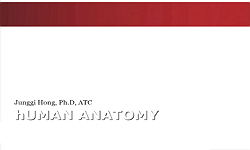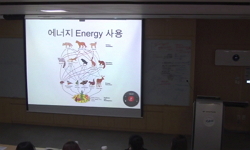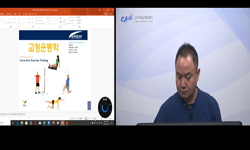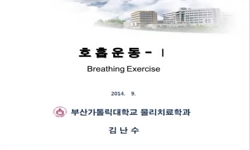Purpose: Ischemic preconditioning (IPC), including remote IPC (rIPC) and direct IPC (dIPC), is a promising method to decrease ischemia-reperfusion (IR) injury. This study tested the effect of both rIPC and dIPC on the genes for antioxidant enzymes and...
http://chineseinput.net/에서 pinyin(병음)방식으로 중국어를 변환할 수 있습니다.
변환된 중국어를 복사하여 사용하시면 됩니다.
- 中文 을 입력하시려면 zhongwen을 입력하시고 space를누르시면됩니다.
- 北京 을 입력하시려면 beijing을 입력하시고 space를 누르시면 됩니다.


Remote Ischemic Preconditioning Enhances the Expression of Genes Encoding Antioxidant Enzymes and Endoplasmic Reticulum Stress-Related Proteins in Rat Skeletal Muscle
한글로보기https://www.riss.kr/link?id=A103554183
- 저자
- 발행기관
- 학술지명
- 권호사항
-
발행연도
2016
-
작성언어
English
- 주제어
-
등재정보
KCI등재,SCOPUS,ESCI
-
자료형태
학술저널
- 발행기관 URL
-
수록면
141-149(9쪽)
-
KCI 피인용횟수
1
- 제공처
- 소장기관
-
0
상세조회 -
0
다운로드
부가정보
다국어 초록 (Multilingual Abstract)
Purpose: Ischemic preconditioning (IPC), including remote IPC (rIPC) and direct IPC (dIPC), is a promising method to decrease ischemia-reperfusion (IR) injury. This study tested the effect of both rIPC and dIPC on the genes for antioxidant enzymes and endoplasmic reticulum (ER) stress-related proteins. Materials and Methods: Twenty rats were randomly divided into the control and study groups. In the control group (n=10), the right hind limb was sham-operated. The left hind limb (IscR) of the control group underwent IR injury without IPC. In the study group (n=10), the right hind limb received IR injury after 3 cycles of rIPC. The IscR received IR injury after 3 cycles of dIPC. Gene expression was analyzed by Quantitative real-time polymerase chain reaction from the anterior tibialis muscle. Results: The expression of the antioxidant enzyme genes including glutathione peroxidase (GPx), superoxide dismutase (SOD) 1 and catalase (CAT) were significantly reduced in IscR compared with sham treatment. In comparison with IscR, rIPC enhanced the expression of GPx, SOD2, and CAT genes. dIPC enhanced the expression of SOD2 and CAT genes. The expression of SOD2 genes was consistently higher in rIPC than in dIPC, but the difference was only significant for SOD2. The expression of genes for ER stress-related proteins tended to be reduced in IscR in comparison with sham treatment. However, the difference was only significant for C/EBP homologous protein (CHOP). In comparison with IscR, rIPC significantly up-regulated activating transcription factor 4 and CHOP, whereas dIPC up-regulated CHOP.Conclusion: Both rIPC and dIPC enhanced expression of genes for antioxidant enzymes and ER stress-related proteins.
참고문헌 (Reference)
1 Zahang X, "Triggers, mechanisms, and potential clinical applications of cerebral ischemic tolerance" 35 : 567-570, 2013
2 Vinten-Johansen J, "The science and clinical translation of remote postconditioning" 14 : 206-213, 2013
3 Baue AE, "The horror autotoxicus and multiple-organ failure" 127 : 1451-1462, 1992
4 Gillani S, "The effect of ischemia reperfusion injury on skeletal muscle" 43 : 670-675, 2012
5 Oyadomari S, "Roles of CHOP/GADD153 in endoplasmic reticulum stress" 11 : 381-389, 2004
6 Kalakech H, "Role of hypoxia inducible factor-1α in remote limb ischemic preconditioning" 65 : 98-104, 2013
7 Remote Preconditioning Trialists'Group, "Remote preconditioning and major clinical complications following adult cardiovascular surgery : systematic review and meta-analysis" 176 : 20-31, 2014
8 Küntscher MV, "Remote ischemic preconditioning of flaps : a review" 25 : 346-352, 2005
9 Brevoord D, "Remote ischemic conditioning to protect against ischemia-reperfusion injury: a systematic review and metaanalysis" 7 : e42179-, 2012
10 Mansour Z, "Remote and local ischemic preconditioning equivalently protects rat skeletal muscle mitochondrial function during experimental aortic crossclamping" 55 : 497-505.e1, 2012
1 Zahang X, "Triggers, mechanisms, and potential clinical applications of cerebral ischemic tolerance" 35 : 567-570, 2013
2 Vinten-Johansen J, "The science and clinical translation of remote postconditioning" 14 : 206-213, 2013
3 Baue AE, "The horror autotoxicus and multiple-organ failure" 127 : 1451-1462, 1992
4 Gillani S, "The effect of ischemia reperfusion injury on skeletal muscle" 43 : 670-675, 2012
5 Oyadomari S, "Roles of CHOP/GADD153 in endoplasmic reticulum stress" 11 : 381-389, 2004
6 Kalakech H, "Role of hypoxia inducible factor-1α in remote limb ischemic preconditioning" 65 : 98-104, 2013
7 Remote Preconditioning Trialists'Group, "Remote preconditioning and major clinical complications following adult cardiovascular surgery : systematic review and meta-analysis" 176 : 20-31, 2014
8 Küntscher MV, "Remote ischemic preconditioning of flaps : a review" 25 : 346-352, 2005
9 Brevoord D, "Remote ischemic conditioning to protect against ischemia-reperfusion injury: a systematic review and metaanalysis" 7 : e42179-, 2012
10 Mansour Z, "Remote and local ischemic preconditioning equivalently protects rat skeletal muscle mitochondrial function during experimental aortic crossclamping" 55 : 497-505.e1, 2012
11 Mansour Z, "Remote and local ischemic postconditioning further impaired skeletal muscle mitochondrial function after ischemia-reperfusion" 56 : 774-782.e1, 2012
12 Przyklenk K, "Regional ischemic 'preconditioning' protects remote virgin myocardium from subsequent sustained coronary occlusion" 87 : 893-899, 1993
13 Khanna G, "Reduction of ischemic , pharmacological and remote preconditioning effects by an antioxidant N-acetyl cysteine pretreatment in isolated rat heart" 128 : 469-477, 2008
14 Murry CE, "Preconditioning with ischemia : a delay of lethal cell injury in ischemic myocardium" 74 : 1124-1136, 1986
15 Li SJ, "Noninvasive limb ischemic preconditioning protects against myocardial I/R injury in rats" 164 : 162-168, 2010
16 Kleikers PW, "NADPH oxidases as a source of oxidative stress and molecular target in ischemia/reperfusion injury" 90 : 1391-1406, 2012
17 Bonnard C, "Mitochondrial dysfunction results from oxidative stress in the skeletal muscle of diet-induced insulin-resistant mice" 118 : 789-800, 2008
18 Rao J, "Lipopolysaccharide preconditioning protects hepatocytes from ischemia/reperfusion injur y (IRI)through inhibiting ATF4-CHOP pathway in mice" 8 : e65568-, 2013
19 Yannopoulos FS, "Leg ischaemia before circulatory arrest alters brain leucocyte count and respiratory chain redox state" 18 : 272-277, 2014
20 Narayanan SV, "Ischemic preconditioning and clinical scenarios" 26 : 1-7, 2013
21 Kottenberg E, "Interference of propofol with signal transducer and activator of transcription 5 activation and cardioprotection by remote ischemic preconditioning during coronary artery bypass grafting" 147 : 376-382, 2014
22 Walters TJ, "Influence of fiber-type composition on recovery from tourniquet-induced skeletal muscle ischemia-reperfusion injury" 33 : 272-281, 2008
23 Grall S, "Endoplasmic reticulum stress pathway involvement in local and remote myocardial ischemic conditioning" 39 : 433-439, 2013
24 Grall S, "Endoplasmic reticulum stress pathway involvement in local and remote myocardial ischemic conditioning" 39 : 433-439, 2013
25 Wang DJ, "Effect of mailuoning injection on 8-iso-prostaglandin F2 alpha and superoxide dismutase in rabbits with extremity ischemiareper fusion injury" 192 : 464-470, 2014
26 Günaydin B, "Does remote organ ischaemia trigger cardiac preconditioning during coronary artery surgery?" 41 : 493-496, 2000
27 Lavi S, "Conditioning of the heart : from pharmacological interventions to local and remote protection : possible implications for clinical practice" 146 : 311-318, 2011
28 Livak KJ, "Analysis of relative gene expression data using real-time quantitative PCR and the 2(-Delta Delta C(T))method" 25 : 402-408, 2001
29 Küntscher MV, "Acute remote ischemic preconditioning II : the role of nitric oxide" 22 : 227-231, 2002
동일학술지(권/호) 다른 논문
-
Spontaneous Renal Artery Dissection Complicated by Renal Infarction: Three Case Reports
- 대한혈관외과학회
- 임차미
- 2016
- KCI등재,SCOPUS,ESCI
-
- 대한혈관외과학회
- 이준성
- 2016
- KCI등재,SCOPUS,ESCI
-
Surgical Thrombectomy for Phlegmasia Cerulea Dolens
- 대한혈관외과학회
- 양신석
- 2016
- KCI등재,SCOPUS,ESCI
-
Unusual Presentation of a Cervical Mass Revealed as External Jugular Venous Aneurysm
- 대한혈관외과학회
- 김수완
- 2016
- KCI등재,SCOPUS,ESCI
분석정보
인용정보 인용지수 설명보기
학술지 이력
| 연월일 | 이력구분 | 이력상세 | 등재구분 |
|---|---|---|---|
| 2027 | 평가예정 | 재인증평가 신청대상 (재인증) | |
| 2021-01-01 | 평가 | 등재학술지 유지 (재인증) |  |
| 2018-01-01 | 평가 | 등재학술지 유지 (등재유지) |  |
| 2015-01-01 | 평가 | 등재학술지 선정 (계속평가) |  |
| 2014-07-11 | 학술지명변경 | 한글명 : 대한혈관외과학회지 -> Vascular Specialist International |  |
| 2014-02-18 | 학술지명변경 | 외국어명 : Korean Journal of Vascular and Endovascular Surgery -> Vascular specialist international |  |
| 2013-01-01 | 평가 | 등재후보 1차 FAIL (등재후보1차) |  |
| 2011-01-01 | 평가 | 등재후보학술지 선정 (신규평가) |  |
학술지 인용정보
| 기준연도 | WOS-KCI 통합IF(2년) | KCIF(2년) | KCIF(3년) |
|---|---|---|---|
| 2016 | 0.04 | 0.04 | 0.04 |
| KCIF(4년) | KCIF(5년) | 중심성지수(3년) | 즉시성지수 |
| 0.03 | 0.03 | 0.289 | 0 |





 KCI
KCI







